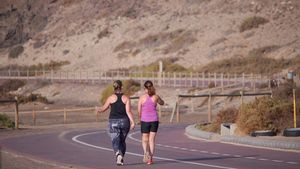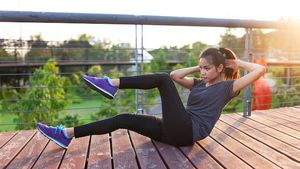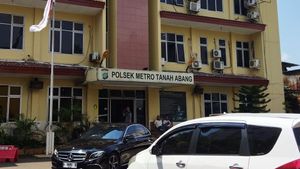JAKARTA When the body starts showing signs of not feeling well or getting sick, it is important to understand when it is safe to exercise and when you should rest. The body often gives certain signals that can be used as a reference.
According to a Channel News Asia report, Dr. Amy Comander, director of a lifestyle treatment program at Massachusetts General Hospital, suggests conducting a thorough evaluation of the body's condition. One way is to apply a "neck check" to determine the severity of the symptoms.
If symptoms above the neck such as stuffy nose, runny nose, or sore throat exercise is still classified as safe as long as your body is strong enough and comfortable doing it.
However, if symptoms appear below the neck, such as muscle pain, fast heart rate, or tired body, it can be a sign that the body is working hard to fight infection. Under these conditions, forcing exercise is at risk of slowing down the recovery process.
Dr. Greg Summerville, a sports specialist from the University of North Carolina at Chapel Hill, added that fever above 37.7 degrees Celsius (100 degrees Fahrenheit) is a strong indication of rest, although other symptoms feel mild.
In addition, vomiting and diarrhea must also be watched out for because it can cause severe dehydration. It is recommended to stop exercising and wait for stable conditions before starting physical activity again. Dr. Comander recommends that a person wait 24 hours after recovering from digestive problems before returning to exercise.
SEE ALSO:
For symptoms that resemble flu, such as muscle pain, fatigue, or pain, it is important to return to exercise gradually after conditions improve.
If you have just recovered from severe diseases such as pneumonia or have undergone treatment at the hospital, you should first consult a doctor before starting physical activity.
In cases of respiratory diseases such as COVID-19, the United States Centers for Disease Control and Prevention (CDC) provides guidance, a person's return to normal activities must be adjusted to the severity of the disease. If you don't experience any symptoms, light exercise can start about three days after a COVID-19 test shows positive results.
However, if there are significant symptoms related to the heart or lungs, such as prolonged chest pain or cough, it is recommended to wait until the symptoms are completely lost before starting physical activity again.
Dr. Tanya Melnik, one of the directors at the Advanced Post-COVID Clinic, M Health Fairview, Minnesota, suggested trying light activities first before returning to exercise. You can start by walking up stairs, doing simple household activities, or standing for a few minutes.
If these light activities make you feel very tired, it means that your body is not ready to exercise intensely.
In addition, when increasing the intensity of the sport, try a speech test: if you have difficulty speaking during training, it's a sign that the intensity of the sport may be too heavy and needs to be reduced.
The English, Chinese, Japanese, Arabic, and French versions are automatically generated by the AI. So there may still be inaccuracies in translating, please always see Indonesian as our main language. (system supported by DigitalSiber.id)
















